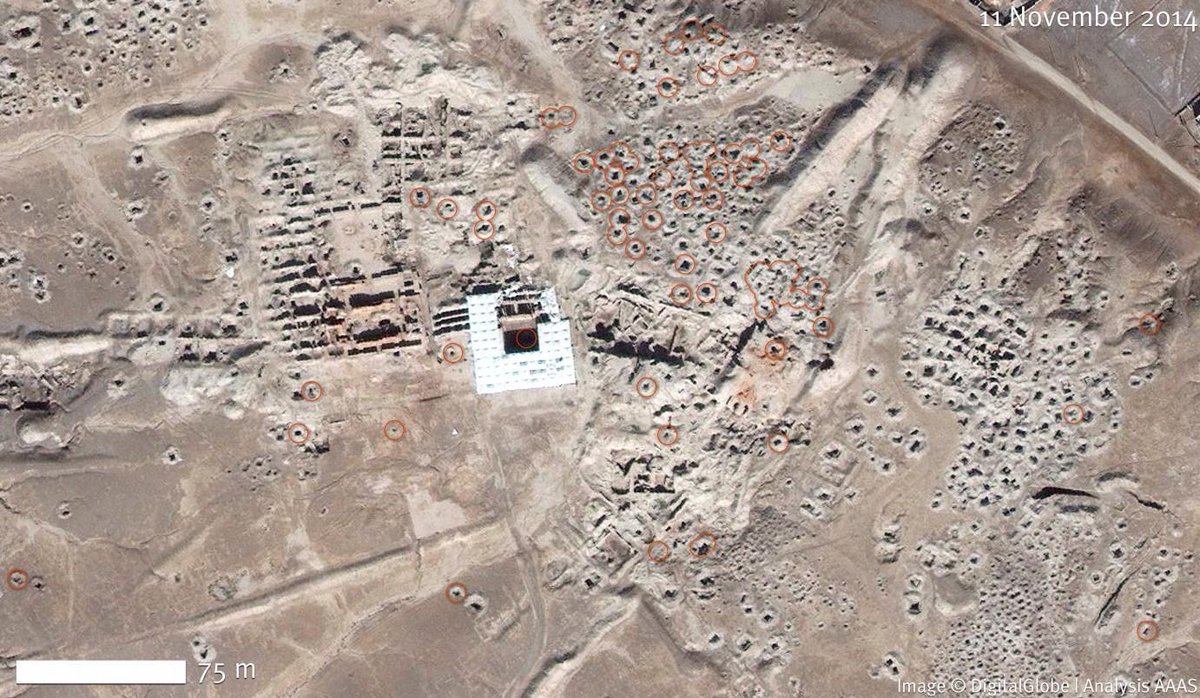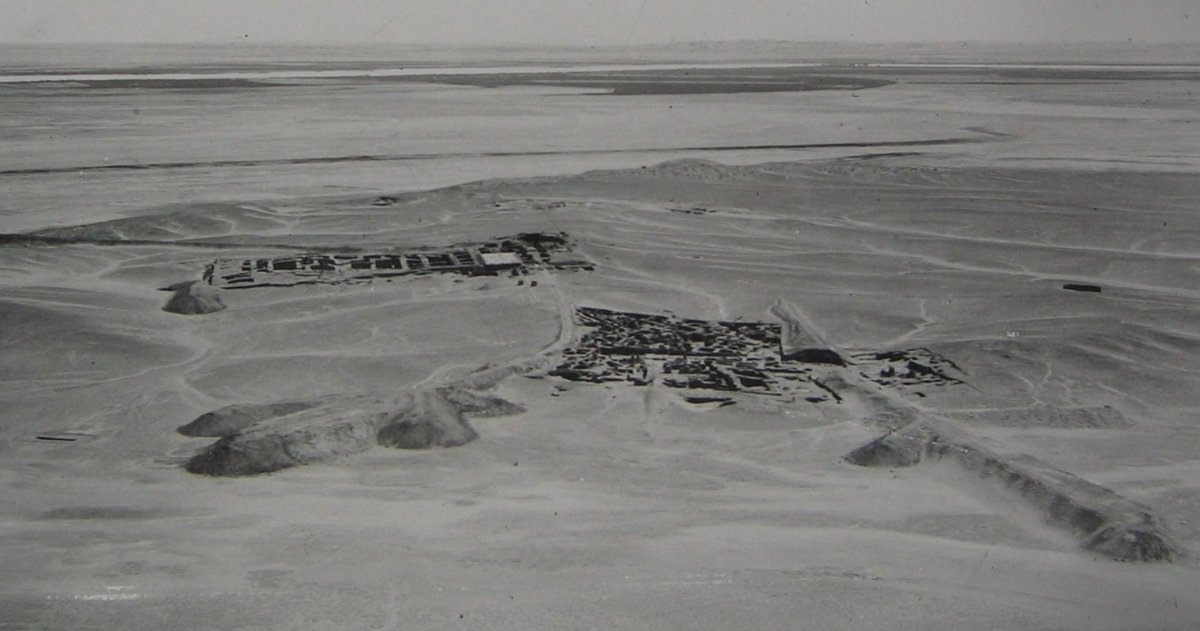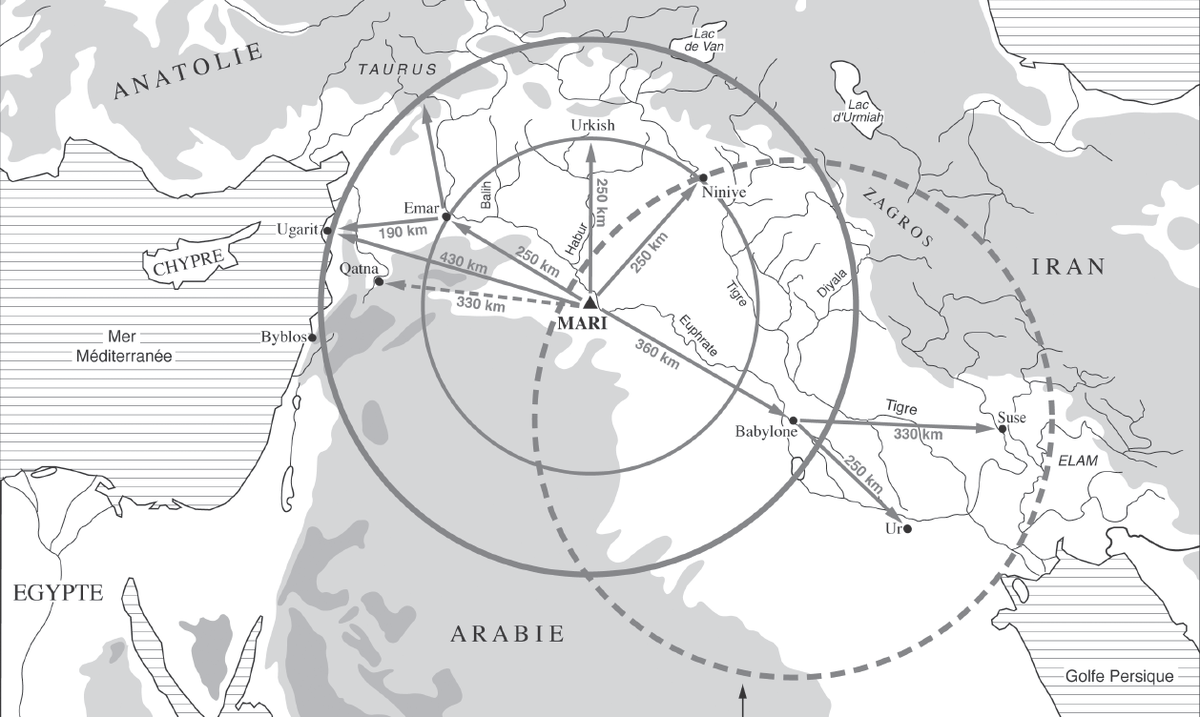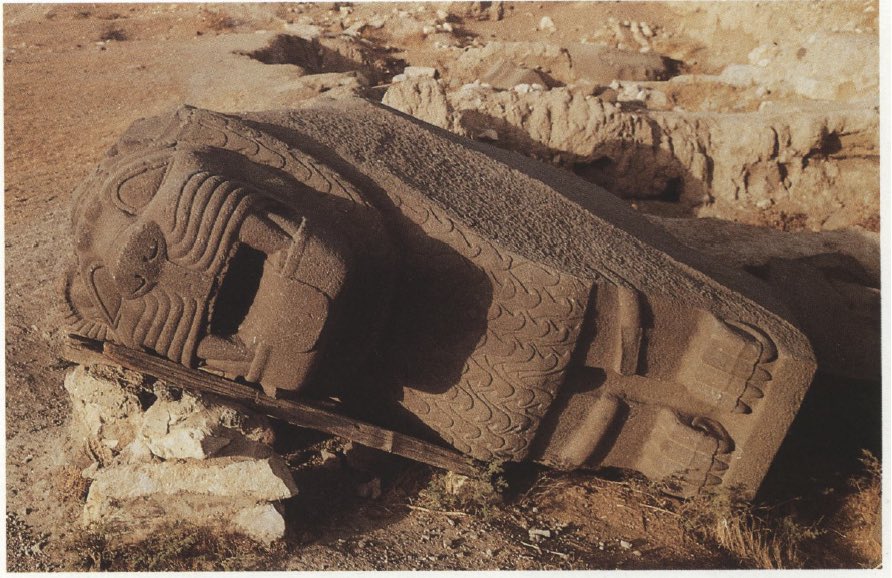
On November 19, 1899, von Oppenheim first stepped onto Tell Halaf. Using the help of some local men, he hit the recently disturbed earth at the spot where the Bedouins had wanted to bury their dead. It was were the sculptures were supposedly at.(1)
After three days of digging, the team first came across a few relief orthostats, but most importantly, Max met his love, his "veiled goddess", the lady of Tell Halaf. He fell so madly in love with her his local excavators called her 'his wife'!(3) 

"This large, dark-colored woman's figure with its retreating forehead, thin lips, and mysterious cast of countenance —whose effect was further heightened by the large, black oval eyeball with a very narrow white rim— threw a spell over me."(4) 



Unfortunately, right after uncovering these first set of sculptures, von Oppenheim chose to cover them back up in hopes to come back later with the appropriate attire, tools, and workforce.(5)
He in fact went off into another adventure, traveling to the various places of Upper Mesopotamia. A summary of his long itinerary: Across the Abd el-Aziz mountain range, village of Hasake, Mardin, Diarbakir, Siverek, Urfa, Birecik, Aintab, Adana, Konia.(6)
He later returned to Germany and asked the Ottoman authorities to "reserve" the mound for him to work on. But ten years later, the Ottoman officials announced they could no longer keep the site for him, as they were being pressed by other countries to allow for excavations.(7)
The prepping for the first full-scale excavation at tell Halaf began in 1911. After gathering all the scientific apparatuses, excavation tools, basic needs and materials to build the excavation house, his transport caravan from Aleppo to Tell Halaf reached 1,000 camels.(9) 

The political demographic by now had vastly changed as well. The Ottoman Empire was in its final breaths, and the secular Young Turks were gaining powerful political grounds. In our area of interest, this also had various repercussions.(10)
The once influential Ibrahim Pasha had been hunted down by the Young Turk Government and died a fugitive at Ras al 'Ain. Von Oppenheim records the effects of such shifts in power: Now Ibrahim's sons themselves were trying to keep the peace in the region.(11)
At the start of his excavations, von Oppenheim was again met with difficulties imposed to him by the Bedouin locals when they insisted they work for him over an extravagant salary, which eventually led him to employ Armenians from Mardin.(12) 
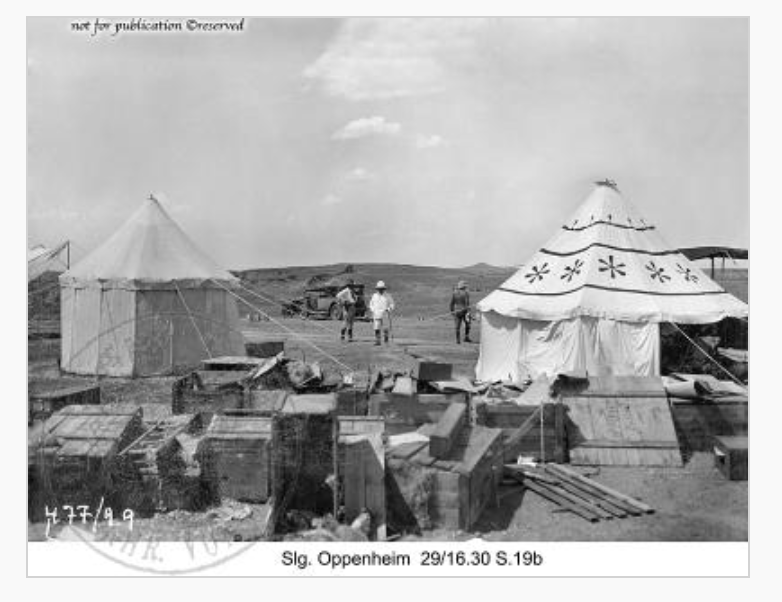
After the collapse of a trench and the death of two men, the Armenians withdrew from work at the Tell, and Max found himself employing Bedouins again. **Note that someone pointed out to me the Bedouins in this context might have meant Kurds**(13)
An average of 550 Bedouins from all ages were employed to excavate for 10 HOURS A DAY. In the scorching heat of Upper Mesopotamia. Many excavators and a few of his team members actually died from heat stroke. Von Oppenheim himself also suffered from it, but was cured.(14) 

Compared to the tens of excavators working with us today, I cannot fathom what 550 would have felt like. Von Oppenheim... was not impressed with them sometimes. He comments: "They acted like children, and were treated as such. (...)(15) 
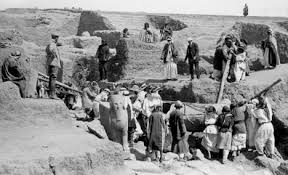
(...)From time to time they would strike because the weather was too bad—when the storms that came so often drove too much sand into their eyes, or when some mischief-maker tried to get higher wages for them. However, they were always easy to quiet down and keep in order."(16)
The dig produced exceptionally preserved architectural structures. First to be unearthed was the "temple-palace" (Kapara's palace). Oppenheim remarked that barely 20 cm had to be shaved from the top soil before they hit the uppermost parts of the walls and sculptures.(17) 

"surprise followed surprise"
Photographed below is the unearthing of the right part of the wall of large orthostats found at the entrance of the Kapara Palace Gate.(18)
Photographed below is the unearthing of the right part of the wall of large orthostats found at the entrance of the Kapara Palace Gate.(18)

Bit by bit, von Oppenheim and his team unearthed "colossal animals, gigantic statues of gods, veiled sphinxes, as well as the façade of the temple palace"— most of what is now iconic of Tell Halaf. The image here shows a reconstruction of the palace entrance.(19) 

Then they got to clear off the first archway of the main gate and followed it like in the olden days into the first of the palace's inner rooms. There they found the charred remains of fallen beams and a skeleton of a young girl "twisted in agony, still wearing her ornaments"(20) 

Soon enough, another archway led them into another room, which was were the three great gods were discovered.(21) 



On the bastion-like southern side of the temple palace, hundreds of smaller-sized orthostats were also discovered mostly still in-situ decorating the lower part of its walls. Von Oppenheim counted 187 total small orthostats. Keep those in mind, we'll come back to them later.(22) 

In 1913, von Oppenheim ended his season of excavation, kept the sculptures found in the site's dig-house, and planned on returning in 1914 or 1915 in order to resume his work. Unfortunately, the excavation was stopped dead in its tracks with the start of the Great War (WWI).(23) 

But he did come back for a new season of excavation in 1927; Unfortunately, twitter allows me 25 posts per thread! I continue this adventure in Part 3: The Tragic Fate of the Tell Halaf Sculptures.
Haven't had the chance to check Part 1? Here it is:
Haven't had the chance to check Part 1? Here it is:
https://twitter.com/ranaofsidon/status/1366743385831321600?s=20
Here's Part 3 for easier access:
https://twitter.com/ranaofsidon/status/1367103204245327876?s=20
• • •
Missing some Tweet in this thread? You can try to
force a refresh








